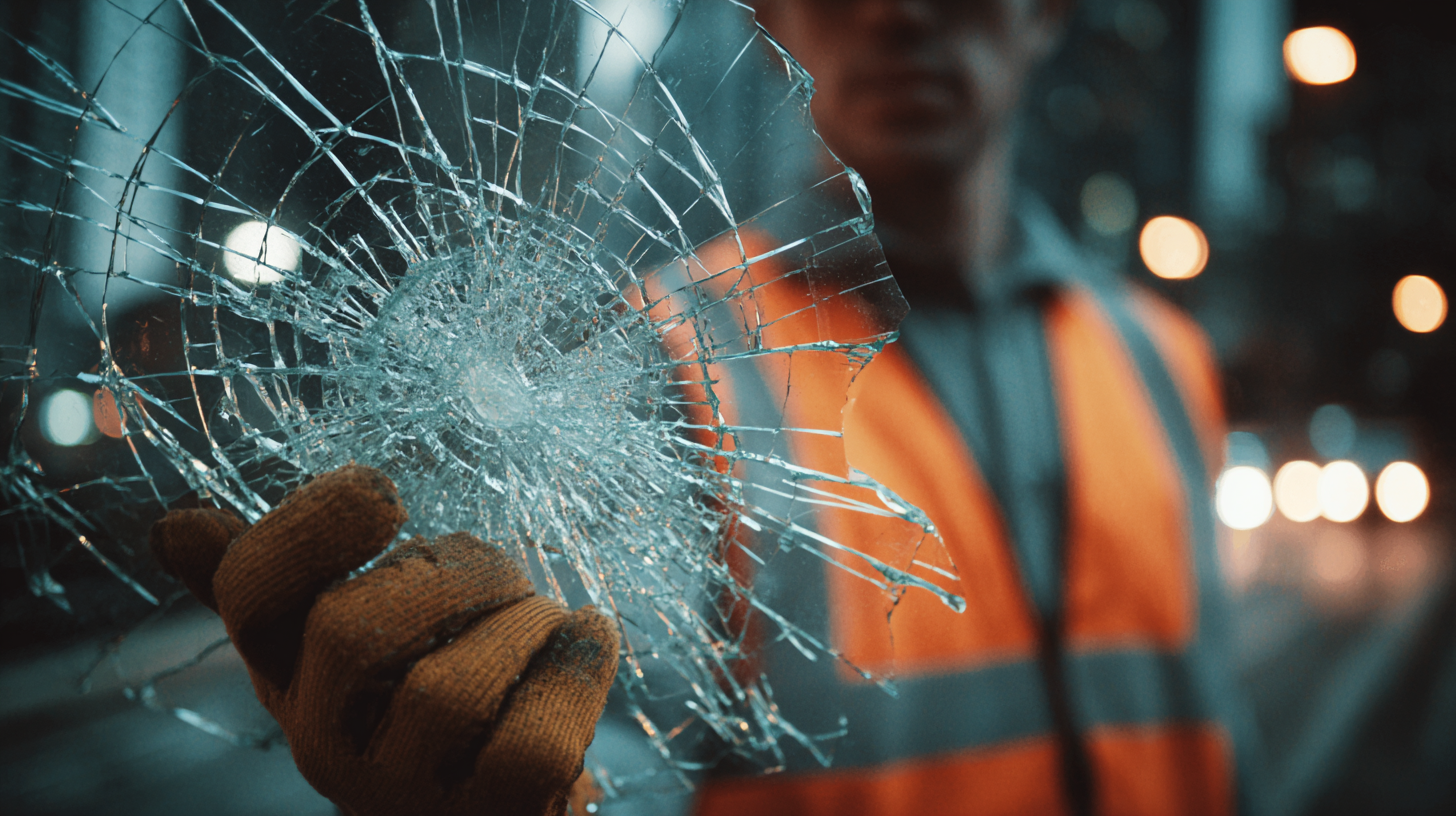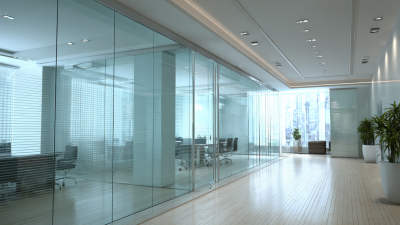
When it comes to ensuring a safe working environment, the choice of Safety Glass is paramount. In the industrial landscape, where hazards such as flying debris, chemical splashes, or harmful UV rays are prevalent, investing in the right protective eyewear can make a significant difference. This ultimate guide explores the myriad options available, highlighting the best types of Safety Glass tailored to your specific workplace needs. From understanding various lens materials and coatings to considering factors like comfort and fit, we aim to equip you with the knowledge necessary to make informed decisions. Whether you are in construction, manufacturing, or laboratories, our comprehensive insights will help you identify the best Safety Glass that not only meets regulatory standards but also enhances productivity and well-being on the job.

When selecting safety glasses for your workplace, there are several crucial factors to consider to ensure optimum protection and comfort for your employees. First and foremost, lens type plays a pivotal role. According to the American National Standards Institute (ANSI), safety glasses should be impact-resistant and made from polycarbonate or Trivex materials, which provide superior protection against flying debris. Data from the Bureau of Labor Statistics indicates that over 20,000 eye injuries occur annually in the workplace, emphasizing the necessity of high-quality lenses that can withstand potential hazards.
Another critical consideration is the fit and comfort of the safety glasses. A study published in the Journal of Occupational and Environmental Hygiene noted that poorly fitting eyewear could lead to reduced compliance among workers, ultimately compromising safety. Features such as adjustable temples, anti-fog coatings, and lightweight designs encourage wearers to use their safety glasses consistently. Additionally, UV protection is essential for outdoor work environments, as prolonged exposure to harmful rays can lead to serious long-term health issues, according to the Centers for Disease Control and Prevention (CDC). By prioritizing these factors, employers can better safeguard their workforce and enhance overall workplace safety.
| Factor | Description | Importance Level | Recommendation |
|---|---|---|---|
| Lens Type | Choose between polycarbonate for impact resistance or glass for optical clarity. | High | Polycarbonate recommended for high-risk environments. |
| Scratch Resistance | Look for coatings that enhance durability and prolong lifespan. | Medium | Consider purchasing glasses with anti-scratch coatings. |
| UV Protection | Essential for outdoor work to protect against harmful UV rays. | High | Ensure 100% UVA/UVB protection. |
| Fit and Comfort | Proper fit is crucial to ensure glasses stay in place during work. | High | Try on before purchasing; options with adjustable features are ideal. |
| Side Protection | Safety glasses should provide coverage from all angles. | Medium | Look for glasses with side shields for additional protection. |
When selecting safety glasses for workplace needs, understanding the various lens types and coatings is essential. Polycarbonate lenses are highly recommended due to their durability and impact resistance, making them ideal for environments exposed to dust, debris, and hazardous chemicals.
These lenses often come with anti-fog and anti-scratch coatings, which prevent fogging during temperature changes and enhance clarity by resisting scratches, vital for maintaining unobstructed vision in critical tasks.
Additionally, consider the specific features of the lens coatings. UV protection is crucial for outdoor activities, safeguarding eyes from harmful rays. If your workplace involves frequent shifts between indoor and outdoor settings, look for glasses with transition lenses or clear filters that maintain visibility without compromising protection. These features not only contribute to safety but also enhance comfort and performance, allowing you to focus on the job without distractions from foggy or scratched lenses.
Choosing the right impact-resistant safety glasses for your workplace is crucial to ensuring the protection of your eyes. One key feature to consider is lens material. Polycarbonate lenses are often favored for their excellent impact resistance while remaining lightweight and comfortable. This material offers superior protection against flying debris, making it ideal for construction sites and industrial environments.
Another important feature is the lens coating. Anti-fog and anti-scratch coatings can significantly enhance the durability and usability of safety glasses. A fog-resistant coating prevents lens clouding caused by temperature changes, ensuring clear vision at all times. Meanwhile, scratch-resistant coatings help maintain clarity and longevity of the glasses, even in demanding conditions.
Lastly, fit and comfort should never be overlooked. Safety glasses that do not fit well can cause discomfort and distraction, which could lead to accidents. Look for adjustable features, such as a flexible frame or nose pads, to ensure a secure and comfortable fit throughout the workday. By focusing on these three key features—lens material, lens coating, and proper fit—you can select the best impact-resistant safety glasses tailored to your specific workplace needs.

Proper maintenance and care of safety eyewear is crucial not only for prolonging their lifespan but also for ensuring maximum protection for workers. According to the Occupational Safety and Health Administration (OSHA), about 2,000 workplace eye injuries occur each day in the United States, highlighting the importance of using well-maintained safety glasses. One of the best practices includes regular inspection for scratches and damage, as compromised lenses can significantly lower the effectiveness of protection. A 2020 report from the National Institute for Occupational Safety and Health (NIOSH) indicated that nearly 50% of injuries were due to inadequate eye protection, further emphasizing the need for diligent upkeep of safety eyewear.
Cleaning safety glasses regularly with appropriate solutions and microfiber cloths is another essential practice. Using ammonia-based cleaners can damage the lens coatings, leading to reduced visibility and compromised safety. NIOSH recommends that workers clean their eyewear daily to remove dirt, grime, and potential contaminants. Additionally, storing safety glasses in a protective case when not in use can prevent scratches and other damage. With a focus on these maintenance practices, organizations can create a safer work environment and reduce the risk of eye-related injuries by ensuring that all safety eyewear is functioning at peak performance.

When it comes to safety glasses, several misconceptions often cloud the decision-making process for workplace safety. One common myth is that all safety glasses provide the same level of protection. In reality, safety glasses are designed for specific hazards, such as chemical splashes or flying debris, and selecting the right type is crucial for ensuring optimal protection.
Another misconception is that safety glasses are uncomfortable and obstruct vision. Advances in technology have led to the development of lightweight materials and ergonomic designs that prioritize both comfort and clarity. Many modern safety glasses come with adjustable features and anti-fog coatings, making them much more user-friendly than older models. By addressing these misconceptions, employers can help their employees make informed choices about their eye protection, thus enhancing overall workplace safety.
This chart illustrates the common misconceptions about safety glasses based on a survey conducted among workers in various industries. The data reveals key areas of misunderstanding that can impact safety practices in the workplace.





